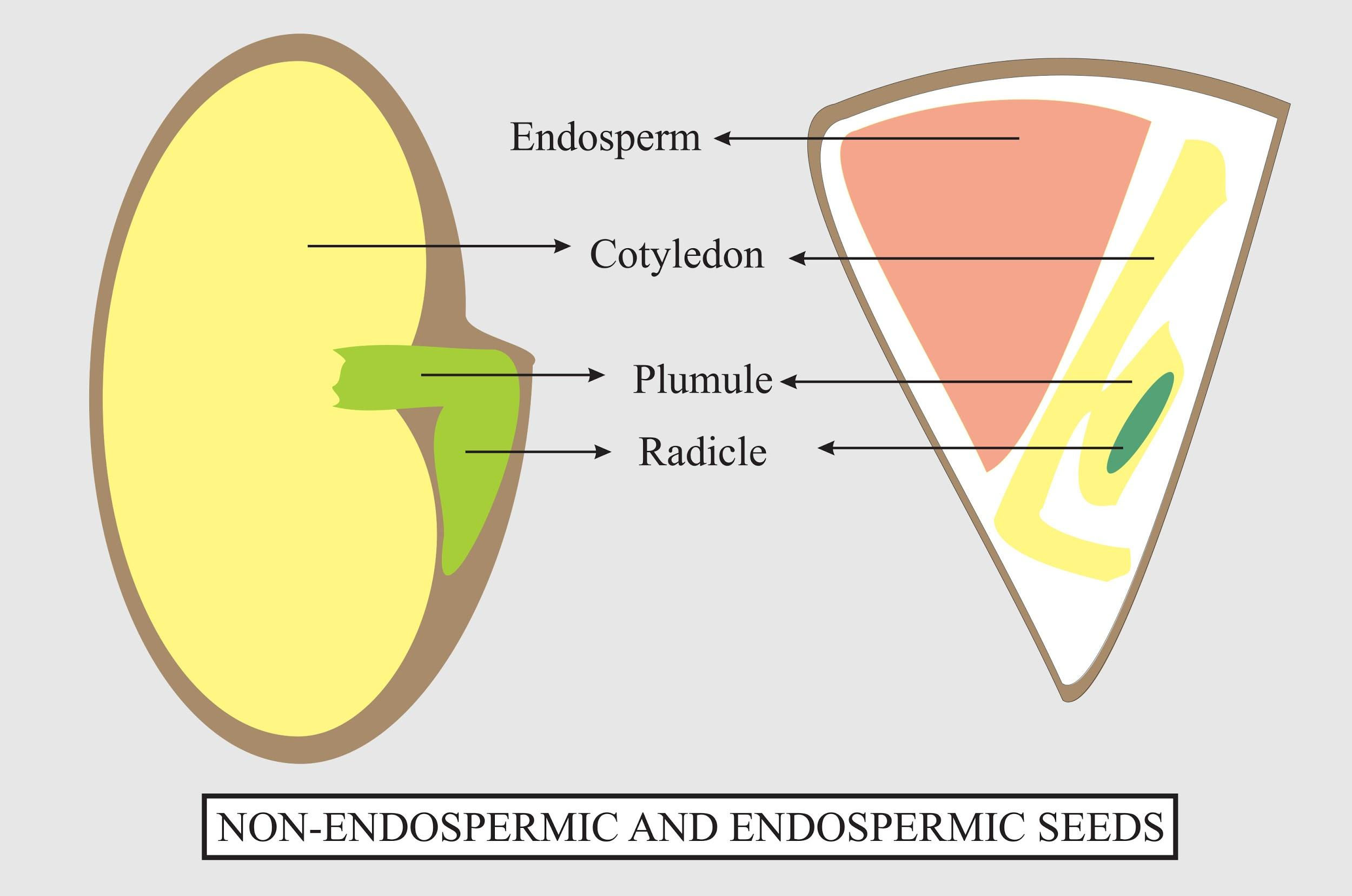
Give any two examples of each endospermic (albuminous) seeds and non-endospermic seeds
Answer
467.1k+ views
Hint: Plants that contain seeds with endosperm even after maturity seen in monocots and in some plants like the plants in the Leguminosae family, the endosperm is absent as the developing embryo consumes all the embryo
Complete answer:
If the endosperm is completely consumed by the developing embryo before the maturation, such seeds are described as non-endospermic seeds. They are also called non-albuminous seeds.

If the endosperm is not completely consumed by the developing embryo and that endosperm is present after the maturation, such seeds are described as endospermic seed or albuminous seeds
Examples of non-endospermic seeds are pea, groundnut, and beans
Examples of endospermic seeds are castor, Maize, and coconut
Additional information:
- After the fusion of three cells called triple fusion the central cell present in the embryo sac becomes the primary endosperm cell (PEC) and later it gets developed into the endosperm.
- This endosperm cell divides repeatedly and forms a triploid endosperm tissue that contains reserved food material.
- This food is used as an energy source by the developing embryo
- The most common type of endosperm development is the formation of free nuclei by the successive nuclear divisions of the primary endosperm nucleus.
- If the endosperm is completely consumed by the developing embryo before maturation then the formed seeds are called non-endospermic seeds and if the endosperm persists even after the maturation such seeds are called endospermic seeds.
- Development of endosperm is the post-fertilization event that occurs in most of the higher plants such as gymnosperms
Note: The water inside the coconut is free nuclear endosperm and the white kernel is cellar endosperm
The scientific names of coconut, castor, ground nun, peas, and beans are cocculus indicus, Gossypium herbarium, Arachis hypogea, Pisum sativum, and Phaseolus vulgaris respectively.
Complete answer:
If the endosperm is completely consumed by the developing embryo before the maturation, such seeds are described as non-endospermic seeds. They are also called non-albuminous seeds.

If the endosperm is not completely consumed by the developing embryo and that endosperm is present after the maturation, such seeds are described as endospermic seed or albuminous seeds
Examples of non-endospermic seeds are pea, groundnut, and beans
Examples of endospermic seeds are castor, Maize, and coconut
Additional information:
- After the fusion of three cells called triple fusion the central cell present in the embryo sac becomes the primary endosperm cell (PEC) and later it gets developed into the endosperm.
- This endosperm cell divides repeatedly and forms a triploid endosperm tissue that contains reserved food material.
- This food is used as an energy source by the developing embryo
- The most common type of endosperm development is the formation of free nuclei by the successive nuclear divisions of the primary endosperm nucleus.
- If the endosperm is completely consumed by the developing embryo before maturation then the formed seeds are called non-endospermic seeds and if the endosperm persists even after the maturation such seeds are called endospermic seeds.
- Development of endosperm is the post-fertilization event that occurs in most of the higher plants such as gymnosperms
Note: The water inside the coconut is free nuclear endosperm and the white kernel is cellar endosperm
The scientific names of coconut, castor, ground nun, peas, and beans are cocculus indicus, Gossypium herbarium, Arachis hypogea, Pisum sativum, and Phaseolus vulgaris respectively.
Recently Updated Pages
Master Class 10 General Knowledge: Engaging Questions & Answers for Success

Questions & Answers - Ask your doubts

Master Class 11 Accountancy: Engaging Questions & Answers for Success

Master Class 10 Computer Science: Engaging Questions & Answers for Success

Master Class 11 Science: Engaging Questions & Answers for Success

Master Class 10 Science: Engaging Questions & Answers for Success

Trending doubts
Draw a diagram of nephron and explain its structur class 11 biology CBSE

Why was the Vernacular Press Act passed by British class 11 social science CBSE

Differentiate between calcination and roasting class 11 chemistry CBSE

A solution of a substance X is used for white washing class 11 chemistry CBSE

What is spore formation class 11 biology CBSE

Nastic movement differ from tropical movement in being class 11 biology CBSE




